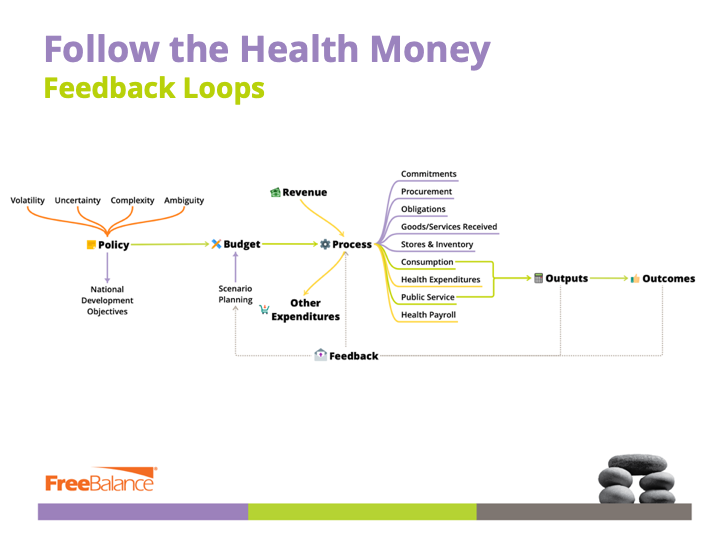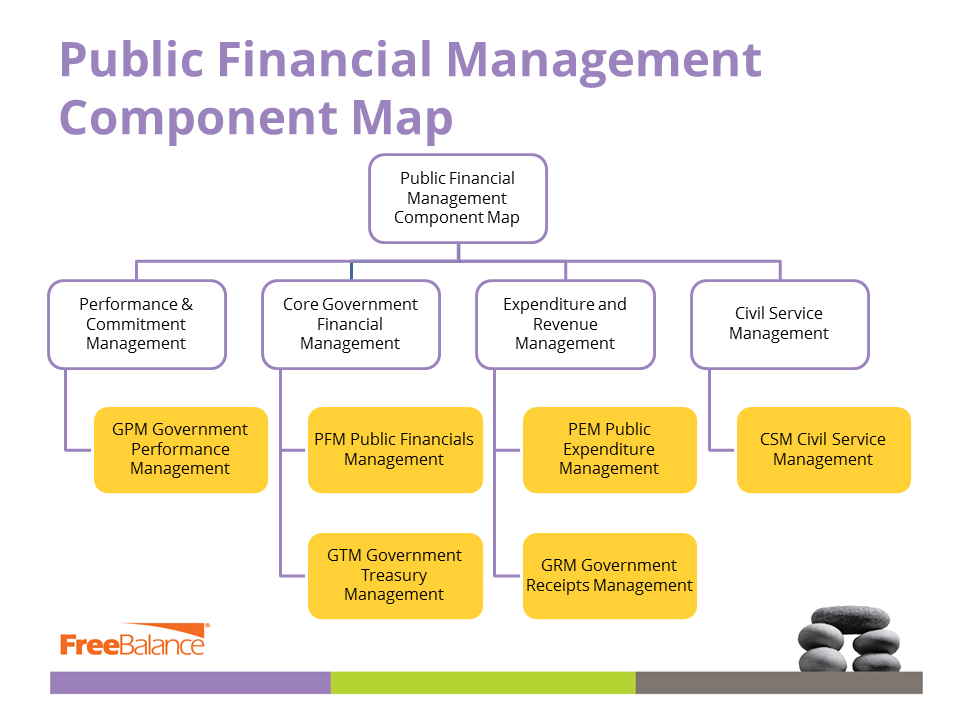How software designed exclusively for government empowers public sector adaptation in ways that custom-developed and generic ERP does not
Challenge for government: reform and modernization to improve citizen outcomes in the midst of economic and health shocks. How can governments effectively:
- reallocate spending in an uncertain environment?
- manage fiscal controls to accelerate priority spending but avoid corruption and overspending?
- track spending from reallocation to outcomes to support decision-making and pandemic transparency?
Context: Public Financial Management (PFM) empowered by Government Resource Planning (GRP) technology supports public sector responses across 3 horizons-
- Horizon 1: improve selected processes by tweaking current technology investments and increasing automation of decision-making and fiscal transparency information during the pandemic
- Horizon 2: leverage risk and opportunity analysis to improve additional processes and integration for the post-pandemic recovery period
- Horizon 3: use an integrated analysis approach to identify biggest impact from technology modernization, process and legal reform
– Empowered by modules of the FreeBalance Accountability Suite, governments adapt to the pandemic across the 3 horizons. We call this “progressive activation” through configured parameters and workflow. This covers functionality across the budget cycle supporting all Public Financial Management (PFM) functionality as described in the Public Financial Management Component Map.
The bad news: not all financial management systems deployed in government adapt well across these 3 horizons. Why?
- Rigidity: many government financial systems lack any ability to quickly change parameters or workflow – and, because of code customization, expensive and time-consuming to adapt to Horizons 2 and 3
- Rusty: many applications supporting government financial functions are built on older technology – it’s often difficult to find people who understand legacy code
- Siloed: government portfolios of financial software often consist of many different applications not using common technology with inconsistent metadata and controls – make a process change in financial system of record requires changes in procurement, payroll, assets, and inventory software
- Disconnected: financial software in government often do not encapsulate full processes, resulting in manual workarounds – limits effective process change, or automation
The bottom line: rigid, rusty, and siloed software presents fiscal management risks in normal day-to-day operations. That’s nothing compared to the fiscal risks during crises!
- That’s why we built in “massive configurability” into theFreeBalance Accountability Suite (and completely rewrote our software to be web-native)
- This approach is something that the Gartner Group calls “postmodern” – what was once modern, like Enterprise Resource Planning (ERP), is now “legacy” & what was once “legacy” is now “rust”
- This is something we learned because of our exclusive focus in public financial management, and our experience implementing software in countries around the world. (In other words, these are lessons that very few companies learn.)

How does the FreeBalance Accountability Suite easily support budget reallocations?
- Configure new budget classifications, including support for programs, to enable reallocation
- Increase budgets for pandemic spending purposes through budget transfers based on budget classifications
- Decrease spending for lower priorities through budget transfers
- Empower decentralization of budget transfers to pandemic spending
- Leverage program budgeting (in the multiple-year Chart of Accounts design) to better understand impact of any budget transfers on government priorities
How does the FreeBalance Accountability Suite easily support control changes?
- Configure commitment controls & levels of aggregation temporarily for pandemic spending
- Accelerate approvals for pandemic spending through escalation to more decision-makers”
How does the FreeBalance Accountability Suite easily track spending?
- Configure fund source in budget classifications to track the entire pandemic cycle
- Forecast spending needs based on trends
- Improve decision-making through integration of commitments, procurement, assets and inventory
- Demonstrate progress by tracking in-progress commitments and purchase orders
- Track outputs like medical supplies and assets, including consumption
- Create fiscal transparency portals to gain citizen and donor trust
How does the FreeBalance Accountability Suite overcome limitations associated with government financial management portfolios? The “unified approach” provides:
- a single point for controls, workflow, and metadata changes for Horizon 1 (and to readjust for Horizon 2)
- single version of the truth for timely decision-making and fiscal transparency

Context: some governments have financial management portfolios using FreeBalance for core financial and treasury functions. How can theFreeBalance Accountability Suite empower control changes, reallocation, and tracking in these situations?
- controls will need to be replicated manually- fortunately, the controls that need to be replicated in subsystem can be reported
- reallocations in functions like procurement could be supported through software coding from the subsystem to validate through a web service
- tracking across subsystems may require direct use of web services, database calls, or other methods (the FreeBalance Accountability Suite is an open system for integration, can support direct databases calls, has an Excel template for applications that are not open)
Other FreeBalance Blog Entries
- How Does Effective Public Financial Management Improve Covid-19 Pandemic Responses?
- 12 Principles to Empower Government Covid-19 Pandemic Responses through PFM
- How can Seamless PFM Interoperability Empower Government Covid-19 Pandemic Responses?
- 18 Ways to Improve Country Resilience to Pandemics and Economic Shocks
- What is the Value of Program Budgeting in Government Covid-19 Response?
- Have you Wondered why Advanced Economies Struggle with Pandemic Spending Reallocation?
- Optimize Your Government Pandemic Response Effectiveness Through Improved Public Financial Management
